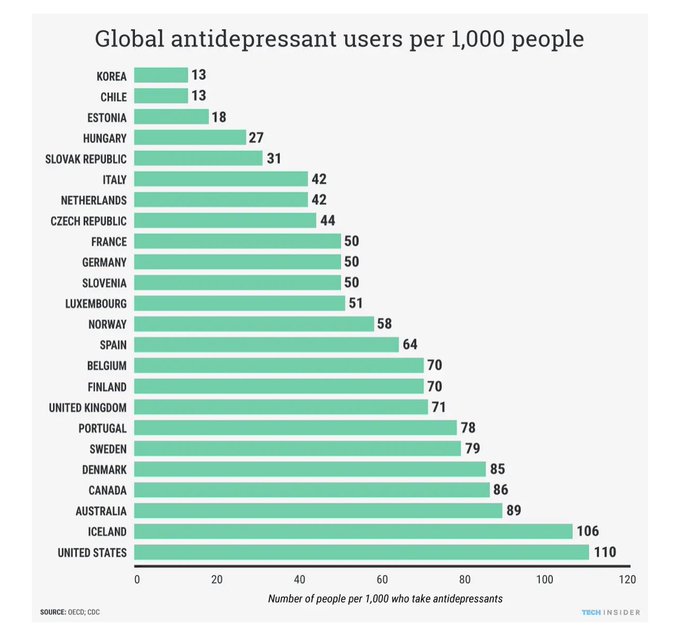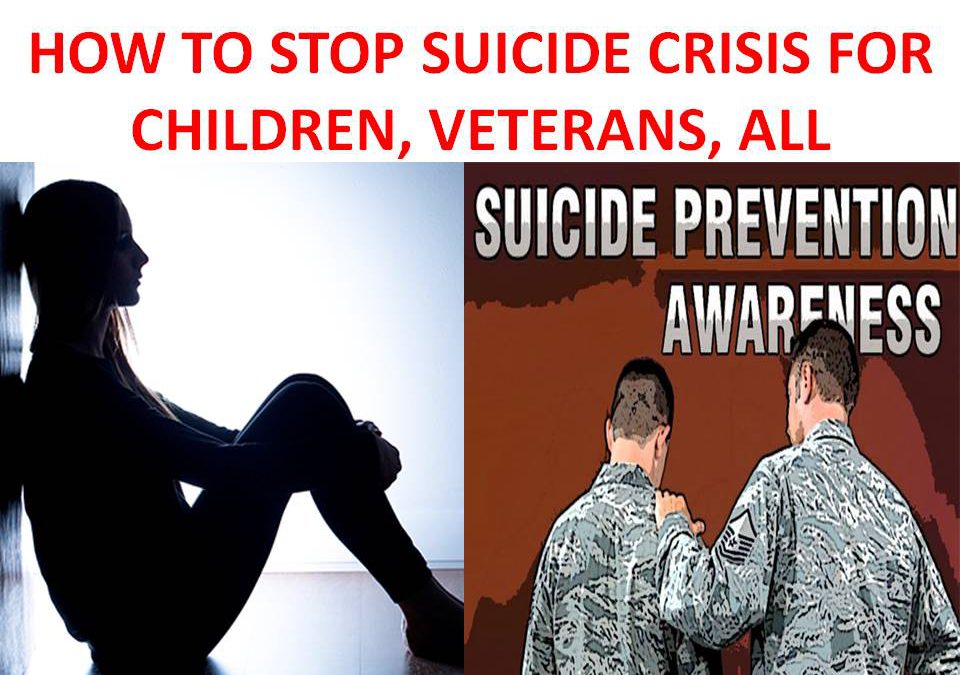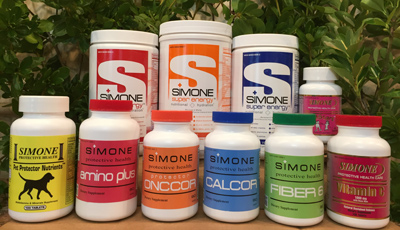We do not diagnose disease or recommend a dietary supplement for the treatment of disease. You should share this information with your physician who can determine what nutrition, disease and injury treatment regimen is best for you. You can search this site or the web for topics of interest that I may have written (use Dr Simone and topic).
“We provide truthful information without emotion or influence from the medical establishment, pharmaceutical industry, national organizations, special interest groups or government agencies.” Charles B Simone, M.MS., M.D.
HOW TO STOP SUICIDE CRISIS FOR CHILDREN, VETERANS, ALL
Lawrenceville, NJ (Dr Charles B. Simone) – There are many risk factors associated with suicide but this Report will focus on one that is often not mentioned – PRESCRIPTION PSYCHOTROPIC DRUGS.
*********************************************************************************************
SUMMARY
1 of 5 or more Americans take psychiatric medicines – $300 BILLION A YEAR MARKET.

ANTIDEPRESSANTS ARE NOT EFFECTIVE
Data submitted to FDA show that antidepressants are not effective in children and teenagers (mean age 9-18 years) and adults. Even in the most severe cases of major depression for which antidepressants are actually approved, they were not effective compared to placebo. And they are inappropriately prescribed “off-label” to children and teenagers and for conditions that are not approved.
CHILDREN In 2015 more than 1.12 million children ages 5 to 18 sought help from emergency departments for suicide attempts or suicidal thoughts – important predictors of death by suicide.
VETERANS Approximately 22 veterans commit suicide every day.
ANTIDEPRESSANTS CAUSE 79% OF VIOLENCE CASES
And largely withheld from the medical community and the public, antidepressants can induce violent behavior.
31 PRESCRIPTION PSYCHIATRIC MEDICINES induce violent behavior accounting for 79% of violence cases – FDA Adverse Event Reporting System.
#1 Chantix is an example of the varenicline class of drugs, the smoking cessation aid, leads the list and was 18 times greater than all the other drugs combined
#2 Prozac is an example of the fluoxetine class
#3 Paxil is an example of the paroxetine class
Next are nine more antidepressants
Six sedative/hypnotics
Attention deficit/hyperactivity disorder prescription drugs
Adderall or Dexedrine are examples of Amphetamine
Ritalin, Concerta, Metadate CD are examples of Methylphenidate
Fluvox is an example of fluvoxamine for obsessive compulsive disorder.
Ambien is an example of Zolpidem
Singulair is an example of montelukast
Seroquel is an example of quetiapine
Oxycodone
Antidepressant drugs as a group had a higher risk of violent thoughts/actions than any other class of psychoactive drugs.
THE BLOOD OF THOSE WHO HAVE SUICIDE IDEATION, OR THOSE WHO ATTEMPT SUICIDE, OR THOSE WHO ACTUALLY COMMIT SUICIDE MUST BE EVALUATED FOR THESE PSYCHOTROPIC DRUGS.
FDA SHOULD REMOVE DRUGS THAT INDUCE VIOLENCE AND ARE NOT EFFECTIVE
And until they are removed, doctors should not prescribe them and counsel patients to a healthy lifestyle and consider recommending certain amino acids that have been shown to be deficit in patients who have depression, hyperactivity, or attention deficit disorders.
*******************************************************************************************
HOW TO STOP SUICIDE CRISIS FOR CHILDREN, VETERANS, ALL
According to the CDC’s National Center for Health Statistics (NCHS), more than 45,000 suicides occurred in 2017 which represents a 33% increase in the national suicide rate between 1999 and 2017.
CHILDREN According to the Center for Disease Control suicide is the second leading cause of death for people ages 10 to 30. In 2015 more than 1.12 million children ages 5 to 18 were sought help from emergency departments for suicide attempts or suicidal thoughts – up from 580,000 in 2007. Suicide attempts and suicidal thoughts are the most important predictors of death by suicide.
Burstein B, Agostino H, Greenfield B. Suicidal Attempts and Ideation Among Children and Adolescents in US Emergency Departments, 2007-2015. JAMA Pediatr. Published Online: April 8, 2019. doi:10.1001/jamapediatrics.2019.0464
VETERANS Approximately 22 veterans commit suicide every day. How many of these men and women were taking psychotropic medicines? And how many veterans are prescribed psychotropic medicines by doctors who think these medicines will help veterans cope with transitioning to civilian life, financial crisis, difficulties accessing educational programs, reintegration to their families, homelessness, mental health, substance use?
U.S. HAS HIGHEST SUICIDE RATE AMONG HIGH INCOME COUNTRIES (13.9 suicides per 100,000 people) according to Commonwealth Fund. The other 10 countries in descending order are Australia, Canada, France, Germany, the Netherlands, New Zealand, Norway, Sweden, Switzerland, and the United Kingdom (7.3 suicides per 100,000 people)..
Psychiatric disorders account for almost 25% of the world’s diseases and the most common disorder is depression. The US FDA has approved the use of antidepressants mainly for major depressive disorder but they are widely prescribed “off-label” inappropriately for mild and moderate depression as well as many other psychiatric disorders. And largely withheld from the medical community and the public, antidepressants can induce violent behavior. In fact, “IN 90% OF ALL SCHOOL SHOOTINGS, THE SHOOTERS EITHER WERE ON OR HAD TAKEN PSYCHOTROPIC DRUGS” THAT CAN INDUCE VIOLENCE.
Data submitted to FDA show that antidepressants are ineffective in children and teenagers (mean age 9-18 years) and adults. Even in the most severe cases of major depression for which antidepressants are actually approved, they were not effective compared to placebo. Antidepressants are approved for patients 18 and older. But they are inappropriately prescribed “off-label” to children and teenagers and for conditions that are not approved.
Published reports claimed positive results even though “negative” trials were either left unpublished or were distorted to present “positive” results. These studies included many small randomized trials with clinically non-relevant outcomes, improper interpretation of statistical significance, manipulated study design, biased selection of study populations, and short follow-up (often less than 8 weeks).
Suicidal thinking was passed off as “emotional lability” or “worsening depression” and this information was buried in appendices that were available for less than half of the trials. The FDA never requested the rest of the appendices. For trials that examined mild to moderate depression, neither a doctor nor the patient would notice any change with medication.
One large meta-analysis study used data that were submitted to FDA. Published reports claimed positive results even though “negative” trials were either left unpublished or were distorted to present “positive” results. These studies included many small randomized trials with clinically non-relevant outcomes, improper interpretation of statistical significance, manipulated study design, biased selection of study populations, and short follow-up (often less than 8 weeks). The average benefit of these drugs was small, while the published literature suggested larger benefits.
A second large meta-analysis also used FDA-submitted data. Even in the most severe cases of major depression, antidepressants were not effective compared to placebo. These studies included many small randomized trials with clinically non-relevant outcomes, improper interpretation of statistical significance, manipulated study design, biased selection of study populations, and short follow-up (often less than 8 weeks).
Ioannidis JP. Effectiveness of antidepressants: an evidence myth constructed from a thousand randomized trials? Philos Ethics Humanit Med. 2008 May 27;3:14. doi: 10.1186/1747-5341-3-14.
Antidepressants are not effective in children and teenagers (mean age 9-18 years) with major depression as shown in 34 published and unpublished randomized trials published from 1986 to 2014 looking at the effects of 14 antidepressants in a total of 5,260 participants. https://www.bmj.com/content/353/bmj.i3234
“Child and adolescent Psychiatry, as an established Medical Specialization, risks permanent extinction, since most of its pharmaceutical armamentarium, prescribed for a variety of common mental conditions, proved ineffective, or even harmful.“
A study from Copenhagen involved the analysis of 131 randomized controlled trials with a total of 27,422 participants. The authors found that every study had a high risk of bias in study design and publication, the clinical significance was questionable, and the antidepressants increased the risk of suicidal thoughts and aggressive behavior doubled in children and adolescents who used these drugs.
The benefit of antidepressant medications “may be minimal or nonexistent, on average, in patients with mild or moderate symptoms.”
In 2004 the FDA gave antidepressants a black box warning because even then it was known they cause suicide ideation. The European Medicines Agency issued similar alerts. But studies have demonstrated violent behavior from antidepressants and other psychotropic drugs.
31 PRESCRIPTION PSYCHIATRIC MEDICINES induce violent behavior accounting for 79% of violence cases (1527 of 1937) – FDA Adverse Event Reporting System.
The search words included homicide, physical assault, physical abuse, homicidal ideation, and violence-related symptom. Suicide was not included in the search – if it were, the number would be higher. We reported this on April 24, 2015 https://www.simonesuperenergy.com/fda-approved-drugs-induce-violence/
#1 Chantix is an example of the varenicline class of drugs, the smoking cessation aid, leads the list and was 18 times greater than all the other drugs combined
#2 Prozac is an example of the fluoxetine class
#3 Paxil is an example of the paroxetine class
Next are nine more antidepressants
Six sedative/hypnotics
Attention deficit/hyperactivity disorder prescription drugs
Adderall or Dexedrine are examples of Amphetamine
Ritalin, Concerta, Metadate CD are examples of Methylphenidate
Fluvox is an example of fluvoxamine for obsessive compulsive disorder.
Ambien is an example of zolpidem
Singulair is an example of montelukast – has a “black box” warning label — for “serious mental health side effects.” (March 4, 2020)
Seroquel is an example of quetiapine
Oxycodone
Antidepressant drugs as a group had a higher risk of violent thoughts/actions than any other class of psychoactive drugs.
The gene CYP450 breaks down some of these drugs. However, if a person has a mutation CYP450 gene, the drugs are not broken down efficiently. Some practitioners argue that people who are on these drugs should have their CYP450 checked.
Also there are some inhibitors of this gene: alcohol, cannabis, citalopram (Celexa), escitalopram (Lexapro), estrogen, fluoxetine (Prozac), fluvoxamine (Luvox), nortriptyline (Pamelor, Aventyl), paroxetine (Paxil), sertraline (Zoloft) and valerian.
THE BLOOD OF THOSE WHO HAVE SUICIDE IDEATION, OR THOSE WHO ATTEMPT SUICIDE, OR THOSE WHO ACTUALLY COMMIT SUICIDE MUST BE EVALUATED FOR THESE PSYCHOTROPIC DRUGS.
Janssen (Big Pharma) lobbied the White House on June 13, 2019 to get their new antidepressant nasal spray Spravato (Esketamine) to be used in combination with oral antidepressant in Veteran Administration hospitals to decrease Veteran suicide rates. However, this drug carries a Black Box Warning with the same effects of all other antidepressants: inducing suicide, suicide ideation, and violence. The drug is related to ketamine, a dissociative drug (like PCP and DXM), known as a party drug, Special K. Dissociative drugs are hallucinogens that cause a person to feel detached from reality. Because it can be abused recreationally, the FDA classifies ketamine as a Schedule III controlled substance. There is also a movement to treat our Veterans with hallucinogens, like LSD, ecstasy, and others. Shame on those who recommend that.
Big Pharma has promoted a myth that antidepressants are effective by using the same playbook – get published, hire “thought leader” doctors to tell other doctors to prescribe and get those drugs into pharmacies.
Jonathan Emord, Constitutional Attorney who has defeated the FDA more times in Federal Court than any other attorney in U.S. history has this to say:
“The financial interests of the psychiatric industry is to feed this drug industry. And the drug industry’s financial interest is to come up with the agents to feed the psychiatric industry. The psychiatric industry, then, is endlessly engaged in identifying new disorders which can then be treated with psychiatric drugs. Now psychiatric drugs are the primary drugs that are consumed in America.”
FDA SHOULD REMOVE DRUGS THAT INDUCE VIOLENCE AND ARE NOT EFFECTIVE because their mission is “to protect the public health by ensuring the safety, efficacy, and security of human….drugs…”
These drugs are not safe and they are not effective.
And until they are removed, doctors should not prescribe them and counsel patients to a healthy lifestyle and consider recommending certain amino acids that have been shown to be deficit in patients who have depression, hyperactivity, or attention deficit disorders.
For Help:
From Canada or US: If you’re in an emergency, please call 911
You can contact the US National Suicide Prevention Lifeline on 1-800-273-8255 or the Crisis Test Line by texting HOME to 741741
Young people in need of help can call Kids Help Phone on 1-800-668-6868
Dr Simone Recommendations:
Simone Ten Point Plan
Point 1. NUTRITION.
-
Maintain ideal weight. Decrease calories.
-
Eat low-fat, low-cholesterol diet: Fish, Poultry, Skim milk products, Eliminate red meats, lunch meats. Limit oils and fat.
-
Maintain an Alkaline pH – SIMONE SUPER ENERGY has a buffered pH of 7.5
-
Eat lots of fiber: 25 – 30 grams per day. Cereals, fruits, vegetables. A supplement may be needed.
-
Supplement diet with certain vitamins & minerals in dosages & combinations for your lifestyle.
–AMINO PLUS will provide needed amino acids
AMINO ACIDS IN HEALTH
CONDITION
|
AMINO ACID ABNORMALITIES
|
COMMENTS
|
DEPRESSION
|
Alanine
Phenylalanine
Tryptophan
Tyrosine
|
Depression can result from deficiencies of catecholamine and serotonin.
Tryptophan and Tyrosine are the respective precursors to these.
Alanine and Phenylalanine are also important
|
HYPERACTIVITY
ATTENTION DEFICIT DISORDER
|
Glutamic Acid
Taurine
Tryptophan
Tyrosine
|
Neurotransmitters play a key role in Attention Deficit Disorder
|
–Resveratrol as a supplement 10 mg per day, or from raisins, purple grape skin, mulberries, peanuts.
–N-Acetyl-Cysteine 1800 mg per day
–Alpha-Tocopherol (Vitamin E) 400 IU per day
–CoQ10 200 mg per day
–Tocotrienol 20 mg to 40 mg per day. Annatto is a rich source of it found in our orange SIMONE SUPER ENERGY. Tocotrienols are also in red palm oil and rice.
–L-Arginine 500 mg per day.
–Vitamin C 500 mg to 1000 mg per day.
–Vitamin D3 4000 IU per day
–Folic Acid 1 mg to 2 mg per day.
–Omega 3: EPA + DHA should be at least 60% or more of the capsule or serving – or can be obtained from cod liver oil, fish, walnuts.
–Eliminate salt and food additives. Limit barbecue, smoked, and pickled foods.
Point 2. TOBACCO. Don’t smoke, chew, snuff, or inhale other people’s smoke.
Point 3. ALCOHOL. Don’t consume, or less than 2 drinks a week.
Point 4. RADIATION X-rays only when needed. Use sunscreen and sunglasses.
Point 5. ENVIRONMENT. Keep air, water, workplace clean. Avoid electromagnetic fields.
Point 6. SEXUAL-SOCIAL, DRUGS, HORMONES. Avoid promiscuity, unnecessary hormones and drugs, especially psychoactive drugs.
Point 7. LEARN the 7 cancer warning signs:
Point 8. REVIEW ALL RISK FACTORS
Point 9. EXERCISE, RELAX, SPIRITUALITY, SEXUALITY.
Point 10. EXECUTIVE PHYSICAL
© 2019 Charles B. Simone, M.MS., M.D. ⋅ 609-896-2646 ⋅ 123 Franklin Corner Road ⋅ Lawrenceville, NJ 08648




